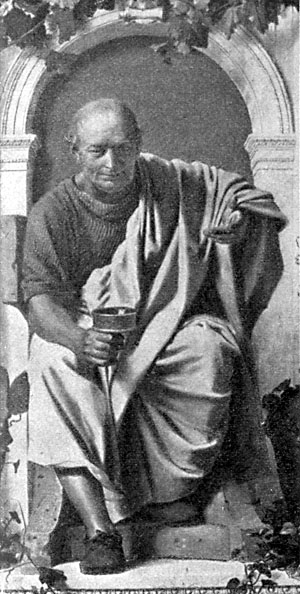A Practical Choice
How do we arrive at a ‘right location’ for our inner work in the Fourth Way?

Horace, a Roman poet at the time of Augustus Caesar, said, “In adversity, remember to keep an even mind.”
This is not just poetic or philosophical advice. It implies a practical choice to be made: where would you rather be, psychologically speaking? On the side of adversity; that is, the turmoil of the many I’s, the intensity of identification, the burden of resenting friction? Or on the side of the even mind: observing the many I’s, having an attitude supporting the work, being present as a result of transforming suffering? Although the answer is obvious, your ability to enact it is a matter of both self-knowledge and self-discipline.
Know Thyself
Without self-knowledge, you would not understand what is happening internally. You would be a stimulus-response sleeping machine. The internal psychological processes would just find expression without any control. You would, literally, be your own adversary.
The Fourth Way system provides one with tools to know oneself. This includes the lower centers and their parts, the many ‘I’s, and the deputy steward which becomes the steward. From one point of view, these are all different locations in the human psyche.

Once named and observed, what you observe is not you anymore. You shift location and become what observes.
Developing Will

Knowledge alone is not enough, though. One needs to develop the will to apply the knowledge, to remember oneself, in order to be able to keep an even mind separate from the adversaries, as Horace advises. And these adversaries are strong and many: imagination, identification, negativity, and the many I’s. (You can see the many I’s in the image of Rustum slaying the dragon made up of many faces). Once you try to rise above them, to reach a right location, they respond with even greater intensity to pull you back into sleep.
We develop will through the practice of school exercises: non-expression of negative emotions, using work I’s to neutralize identification, avoiding wit, and more. Working with other students on the second and third lines of work, receiving and providing photographs, is another way to strengthen will and the ability to observe the lower centers.
The Changing and the Unchanging
One more aspect of the unreality of these states of sleep is that they are ever-changing. They typically do not last long. It may be easier to see this with the many I’s, rather than with unpleasant suffering that you wish would go away. What observes these many I’s is unchanging, relative to the I’s. It is more real because it survives them. You can always go back to this place, this right location, if you remember how.
Once, I was going through a rough time, moving places, starting a new job, adjusting to a new environment with many people I did not know. I was sharing this experience with a good friend. I told her, “It seems like everything is changing.” The wise friend said: “Look for what is unchanging.” This immediately triggered a shift in location for me. It connected to what was more real and lasting in me: the part that observed, rather than what I was observing.

Raffaele Bianchi
Very beautiful, and pleasantly explanatory.
With Friendship.